#Automotive OTA Updates Market Share
Text
Automotive OTA Updates Market To Reach USD 13,959.5 Million by 2030
As per a report by P&S Intelligence, the total size of the automotive OTA updates market was USD 3,315.8 million in 2022, and reaching USD 13,959.5 million by 2030, powering at a rate of 19.7% by the end of this decade.
The revenue share of software was larger, with 80%, in 2022, and it will continue like this in the future as well. This is because of the progressions in connectivity technology…

View On WordPress
#Automotive OTA Updates Market#Automotive OTA Updates Market Growth#Automotive OTA Updates Market Outlook#Automotive OTA Updates Market Research Report#Automotive OTA Updates Market Share#Automotive OTA Updates Market Size#Automotive OTA Updates Market Trends
0 notes
Text
Connected Vehicles Market Size, Share Analysis, Key Companies, and Forecast To 2030
The Connected Vehicles Market was valued at USD 59.8 billion in 2023-e and will surpass USD 182.8 billion by 2030; growing at a CAGR of 17.3% during 2024 - 2030. The report focuses on estimating the current market potential in terms of the total addressable market for all the segments, sub-segments, and regions.
In the process, all the high-growth and upcoming technologies were identified and analyzed to measure their impact on the current and future market. The report also identifies the key stakeholders, their business gaps, and their purchasing behavior. This information is essential for developing effective marketing strategies and creating products or services that meet the needs of the target market.
Get a Sample Report: https://intentmarketresearch.com/request-sample/connected-vehicles-market-3311.html
Understanding Connected Vehicles
Vehicle-to-Vehicle (V2V) Communication: Cars can share information about speed, position, and heading, which helps in preventing collisions and improving traffic flow.
Vehicle-to-Infrastructure (V2I) Communication: Vehicles interact with road infrastructure like traffic lights and road signs to enhance safety and efficiency.
Infotainment and Navigation: Drivers and passengers can enjoy real-time traffic updates, streaming services, and hands-free communication.
Remote Diagnostics and Over-the-Air (OTA) Updates: Vehicle health monitoring and software updates can be performed remotely, ensuring optimal performance and security.
Market Dynamics
The global connected vehicles market is witnessing robust growth, driven by several key factors:
Safety and Regulatory Mandates: Governments worldwide are implementing stringent safety regulations that necessitate the adoption of advanced driver assistance systems (ADAS) and connectivity solutions.
Consumer Demand for Convenience and Efficiency: Modern consumers expect seamless connectivity in all aspects of their lives, including their vehicles. This demand drives automakers to integrate advanced infotainment and navigation systems.
Technological Advancements: The rapid development of 5G technology and the Internet of Things (IoT) is enhancing vehicle connectivity, making it faster and more reliable.
Emergence of Autonomous Vehicles: The push towards autonomous driving relies heavily on vehicle connectivity to ensure safe and efficient operation.
Key Players and Innovations
Several automotive giants and tech companies are leading the charge in the connected vehicles market. Companies like Tesla, General Motors, Ford, and BMW are at the forefront, continuously innovating and integrating new technologies. Key innovations driving the market include:
5G Connectivity: The rollout of 5G networks is a game-changer, offering high-speed, low-latency communication essential for real-time data exchange between vehicles and infrastructure.
Edge Computing: By processing data closer to the source, edge computing reduces latency and enhances the performance of connected vehicle systems.
Artificial Intelligence (AI): AI is critical for developing advanced driver assistance systems, predictive maintenance, and personalized in-car experiences.
Blockchain Technology: Ensuring data security and privacy, blockchain can play a pivotal role in safeguarding the vast amounts of data generated by connected vehicles.
Get an insights of Customization: https://intentmarketresearch.com/ask-for-customization/connected-vehicles-market-3311.html
Challenges and Opportunities
While the connected vehicles market is poised for significant growth, it faces several challenges:
Cybersecurity Threats: As vehicles become more connected, they also become more vulnerable to cyber-attacks. Ensuring robust cybersecurity measures is paramount.
Infrastructure Development: The full potential of connected vehicles can only be realized with the development of smart infrastructure, which requires substantial investment.
Data Privacy Concerns: With vast amounts of data being collected, issues around data privacy and ownership need to be addressed.
Despite these challenges, the opportunities are immense. The connected vehicles market holds the promise of:
Enhanced Road Safety: Reduced accidents and improved emergency response through real-time data sharing.
Improved Traffic Management: Alleviating congestion and optimizing traffic flow with intelligent transportation systems.
Environmental Benefits: Reducing emissions through efficient route planning and vehicle-to-infrastructure communication.
The Road Ahead
The future of the connected vehicles market is bright, with continued advancements in technology set to unlock new possibilities. The integration of connectivity in vehicles is not just enhancing the driving experience but is also paving the way for a future where autonomous driving is a reality. As we drive into this future, the collaboration between automakers, tech companies, and governments will be crucial in addressing challenges and maximizing the potential of connected vehicles.
In conclusion:
The connected vehicles market is on a transformative journey, reshaping the automotive landscape. With safety, convenience, and efficiency at its core, it promises to drive us into a smarter, more connected future.
0 notes
Text
Software-Defined Vehicle
April 9, 2024
by dorleco
with no comment
Others

Introduction
The automobile sector has been at the forefront of creative technology adoption as it continues to evolve in response to constantly shifting consumer needs. In addition, the automobile industry’s faster time-to-market for new technologies has made it possible for this sector to conduct a lot more research and development than others.
The use of software in current cars results from the development of artificial intelligence, high-speed communication and networking, and digital product engineering. Because of this, software has become more and more crucial in enabling advancements in performance features, safety, and security to provide unique driving experiences.
Megatrends including electrification, mobility, connection, and autonomous driving are expected to transform the automotive industry over the next ten years drastically. These developments are a major factor in the automotive industry’s shift to a software-centric strategy for meeting specialized needs.
When combined, these developments can potentially cause significant disruption to the automotive sector, as each is equally potent on its own. Several other terms for this industry development include CASE-connected, automated, shared, and electrified.
The three key factors influencing technology adoption in the automotive industry are mostly responsible for these recent developments in the sector:
The updated OEM requirements
Hardware and software standardization
The vehicle described by the software
What is a software-defined vehicle?
A vehicle whose primary means of operation is software is referred to as a “software-defined vehicle.” An F-35 fighter jet contains 25 million lines of code, but a luxury automobile nowadays has about 100 million.
And a space shuttle, too! This degree of sophistication is mostly attributable to cars having an increasing number of VCUs, sensors, cameras, radar, and lidar devices.
Research conducted by Accenture predicts that by 2030, software will make up 40% of a car’s overall worth. By contrast, in 2015, this percentage was only 10%. The software tsunami is being driven by features like ADAS, over-the-air (OTA) updates, cyber security, and several new services.
To handle the potentially over 300 million lines of code that a fully autonomous automobile of the near future may have, automakers and Tier 1s are turning more and more to automotive software providers.
One of the main causes pushing toward a software-defined vehicle is the growing explosion of OEM requirements for new vehicle programs. Manufacturers now concentrate on software-enabled features that benefit the customer and help them position their product in a market that is all its own.
An advance in E/E architectures that can match simplicity and capacity is being brought about by these constantly growing software needs. This necessitates the separation of software and standardization of hardware.

Advantages, difficulties, and opportunities
Recalls relating to automotive software have been increasing. Currently, automakers notify customers through letters or emails about recalls. Customers must then drive to the dealership to manually update their software.
Customers will be able to obtain updates over-the-air (OTA) in software-defined automobiles, similar to what we get on our smartphones! Along with telematics and infotainment enhancements, this technology can also monitor and adjust the powertrain and vehicle dynamics.
Custom driver experiences will be offered by the software-defined car. Huge volumes of data will be exchanged between the VCUs and DCUs and sensors and actuators, giving automakers insights unique to each car.
As a result, OEMs may be able to create a new source of income in addition to strengthening their relationship with customers.
Adopting software-centric methodologies also comes with some corporate and cultural obstacles. Reworking their supply chain connections and business models will be necessary for OEMs and Tier 1s. The automobile industry will need to upskill to implement new software tools and procedures.
For new software features to be developed and deployed effectively, the project roadmap needs to be managed more carefully and in a way that offers value.
Increased software equals increased potential for cyberattacks. An attacker can gain access to a vehicle’s systems through Wi-Fi, Bluetooth, cellular networks, and other means from anywhere on the globe.

Thus, protecting systems against such attacks requires creative solutions and reliable methods.
Since more cyber security regulations are being driven by high-security requirements, which will ultimately enhance the system, we should be able to take advantage of many more possibilities that may be present in the problems. To create software for their next car programs, OEMs must make important strategic choices. If OEMs choose to create in-house software to satisfy demands across domains, they have the opportunity to become software giants.
It’s also an option for OEMs to choose to build only a portion of the highly distinguishing domains in-house while outsourcing the other software needs.

Alternatively, they have the option to fully contract out all of their software development and services to specialist software vendors.
The software capabilities of the car of the future and its capacity to live up to expectations obtained from traditional software platforms will determine it to a large degree. The effective integration of major technology suppliers and new industry participants will open up new opportunities for the software-defined future!
This makes it possible for numerous up-and-coming automotive software technology businesses, such as Dorleco, to enter the market and establish themselves by collaborating with significant OEMs and Tier 1s. Are you trying to find a complete software package for your upcoming smart car? Send an email to [email protected] to find out more about our assistance.
#VCUs#VehicleControlUnit#softwaredefined#LiDarsensors#Autonomousvehicle#VCUSupplier#VCUManufacturer#Dorleco
0 notes
Text
Automotive OTA Upgrade Solution, Global Market Size Forecast, Top 10 Players Rank and Market Share
Automotive OTA Upgrade Solution Market Summary
Automotive OTA (Over-The-Air) Upgrade Solution refers to a system or technology that enables the remote and wireless updating of software and firmware in vehicles. This technology allows automakers to deliver updates and improvements to various electronic systems within a vehicle, such as the infotainment system, engine control unit (ECU), safety features, navigation systems, and more, without requiring physical access to the vehicle.
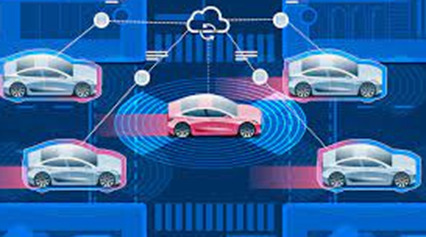
According to the new market research report "Global Automotive OTA Upgrade Solution Market Report 2023-2029", published by QYResearch, the global Automotive OTA Upgrade Solution market size is projected to grow from USD 5978.35 million in 2023 to USD 10264.57 million by 2029, at a CAGR of 9.43% during the forecast period.
Figure. Global Automotive OTA Upgrade Solution Market Size (US$ Million), 2023-2029
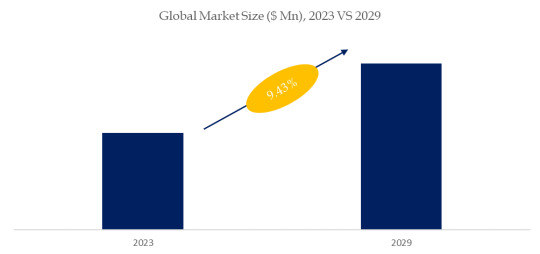
Above data is based on report from QYResearch: Global Automotive OTA Upgrade Solution Market Report 2023-2029 (published in 2023). If you need the latest data, plaese contact QYResearch.
Figure. Global Automotive OTA Upgrade Solution Top 10 Players Ranking and Market Share (Ranking is based on the revenue of 2022, continually updated)

Above data is based on report from QYResearch: Global Automotive OTA Upgrade Solution Market Report 2023-2029 (published in 2023). If you need the latest data, plaese contact QYResearch.
This report profiles key players of Automotive OTA Upgrade Solution such as Robert Bosch GmbH,lnfineon Technologies,NXP Semiconductors,Harman International,Continental AG,Delphi Automotive,KPIT,Blackberry,Infopulse,Elektrobit
In 2022, the global top five Automotive OTA Upgrade Solution players account for 38.67% of market share in terms of revenue. Above figure shows the key players ranked by revenue in Automotive OTA Upgrade Solution.
Market Drivers:
1. Software update requirements: In recent years, more and more software and electronic control units (ECUs) have been embedded in cars, and vehicle manufacturers need an effective way to update and manage these software to meet the rapid changes in the market and consumer demand.
2. User experience: Providing OTA upgrades can improve the user experience of the vehicle, allowing car owners to easily obtain the latest features and improvements without having to go to the dealer for updates.
3. Security vulnerability repair: OTA upgrades enable automakers to quickly respond to discovered security vulnerabilities and provide timely security patches, helping to ensure the safety of vehicles and passengers.
4. Cost-effectiveness: Through OTA upgrades, manufacturers can avoid recall costs, reduce maintenance and update costs, and improve overall operational efficiency.
5. Technological innovation: OTA upgrades promote innovation in vehicle technology, adding new functions and improvements to vehicles, such as autonomous driving functions, entertainment system upgrades, etc.
Restraint:
1. Security and privacy issues: Vehicle OTA updates involve security and privacy risks, including security vulnerabilities that may result from hacker attacks, as well as privacy issues during data transmission and storage.
2. Network connection reliability: OTA upgrade relies on stable wireless network connection. In some areas or poor network environments, the upgrade process may be interrupted or failed.
3. Hardware compatibility: Some older models may not have sufficient hardware performance to support new software and functions, which may limit the scope of OTA upgrades.
4. Regulations and compliance: In some regions, regulations and compliance requirements may impose certain restrictions and requirements on the implementation of OTA upgrades.
5. User acceptance: Some car owners may be skeptical about remote updates, worried about possible problems or not wanting to perform software updates without dealer supervision.
About The Authors
Yaping Zhao - Lead Author
Email: [email protected]
About QYResearch
QYResearch founded in California, USA in 2007.It is a leading global market research and consulting company. With over 16 years’ experience and professional research team in various cities over the world QY Research focuses on management consulting, database and seminar services, IPO consulting, industry chain research and customized research to help our clients in providing non-linear revenue model and make them successful. We are globally recognized for our expansive portfolio of services, good corporate citizenship, and our strong commitment to sustainability. Up to now, we have cooperated with more than 60,000 clients across five continents. Let’s work closely with you and build a bold and better future.
QYResearch is a world-renowned large-scale consulting company. The industry covers various high-tech industry chain market segments, spanning the semiconductor industry chain (semiconductor equipment and parts, semiconductor materials, ICs, Foundry, packaging and testing, discrete devices, sensors, optoelectronic devices), photovoltaic industry chain (equipment, cells, modules, auxiliary material brackets, inverters, power station terminals), new energy automobile industry chain (batteries and materials, auto parts, batteries, motors, electronic control, automotive semiconductors, etc.), communication industry chain (communication system equipment, terminal equipment, electronic components, RF front-end, optical modules, 4G/5G/6G, broadband, IoT, digital economy, AI), advanced materials industry Chain (metal materials, polymer materials, ceramic materials, nano materials, etc.), machinery manufacturing industry chain (CNC machine tools, construction machinery, electrical machinery, 3C automation, industrial robots, lasers, industrial control, drones), food, beverages and pharmaceuticals, medical equipment, agriculture, etc.
0 notes
Text
Fueling Connectivity: Over-The-Air Software Updates in the IoT Era
In 2022, the global over-the-air software update market is anticipated to be worth US$ 4,713.4 million USD. With the rapid global spread of connected autos and their increasing dependency on software, the overall demand for over-the-air software updates is expected to expand at a CAGR of 16.6% between 2022 and 2032, totaling roughly US$ 21,867.1 Million by 2032.
Internet of things (IoT) is the internetworking of electronic devices, vehicles, buildings and other items through connected devices or smart devices. With the boom in IoT, the number and types of smart devices are growing and same is the case with software in these devices. Successively, there is increasing need for a way to distantly able to manage these devices. Over-the-air (OTA) is a standard for the communication and downloading of application related instruction in a wireless communication system.
Request a Sample of this Report: https://www.futuremarketinsights.com/reports/sample/rep-gb-2086
The wireless delivery of new software or data to the devices be it mobile, tablets or others without requiring a physical access to the device can be termed as over-the-air software update. While smartphones and laptops are quite common for remote over-the-air software updates other industries such as automotive and healthcare will eventually play a prime role providing opportunity for over-the-air software update market.
To support over-the-air software update, automobile manufacturers ought to have a backend software management solution. The control that can restrict the over-the-air software update to Wi-Fi or require the vehicle to be parked before updating or so on.
Global Over-the-Air Software Update Market: Drivers
Over-the-air software updates have significant economic advantages owing to the large cost saving compared to the existing manual approaches. Automakers can drastically reduce the cost of updating vehicle software in order to improve functionality or to fix issues.
They can address consumer demands for the latest cloud-based services, voice recognition, navigation, maps and other services, which is now updated through service appointments. The above mentioned factors are attracting the automakers to enhance their customer experience by adopting over-the-air software update technology driving the global over-the-air software update market.
Global Over-the-Air Software Update Market: Restraints
Cyber-security is the prime reason that act as a challenge for the key player that provide over-the-air software update decelerating the growth of over-the-air software update market. Few other challenges include code size of the microcontroller based application, robustness, bandwidth needs to be appropriate for the boot-loader to function appropriately and version management which act as a barrier for the key players to adopt new innovation impacting negatively the global over-the-air software update market.
Request Methodology: https://www.futuremarketinsights.com/request-report-methodology/rep-gb-2086
Global Over-the-Air Software Update Market: Regional Outlook
North America and Western Europe are regionally having the prime client base who have already accepted this new innovation owing to the greater share regionally in global over-the-air software update market. APEJ and Japan are the regions which have potential for global over-the-air software update market due to the growing income of the population and many end-user verticals setting up their production facilities in these regions.
Global Over-the-Air Software Update Market: Competition Landscape
Key players of the global over-the-air software update market include Libelium Comunicaciones Distribuidas S.L., Harman International, WindRiver, Movimento, Aricent Inc., Autonet Mobile, Inc., Hitachi Automotive Systems Ltd. and Advanced Telematic Systems GmbH, Zeeis Technologies and Gemalto NV
The report covers exhaustive analysis on
Global Over-the-Air Software Update Market Segments
Global Over-the-Air Software Update Market Dynamics
Historical Actual Market Size, 2013 – 2015
Global Over-the-Air Software Update Market Size & Forecast 2016 to 2026
Supply & Demand Value Chain
Global Over-the-Air Software Update Market Current Trends/Issues/Challenges
Competition & Companies involved
Technology
Value Chain
Global Over-the-Air Software Update Market Drivers and Restraints
Request for Customization: https://www.futuremarketinsights.com/customization-available/rep-gb-2086
Regional analysis for Global Over-the-Air Software Update Market includes
North America
Latin America
Western Europe
Eastern Europe
Asia Pacific
Japan
Middle East and Africa
Key Segments Covered in the Over-The-Air Software Update Industry Analysis
Over-The-Air Software Update Market by End-Use Vertical
Automobile Industry
Gaming Industry
Media and Entertainment Industry
Over-The-Air Software Update Market by Region
North America Over-The-Air Software Update Market
Latin America Over-The-Air Software Update Market
Europe Over-The-Air Software Update Market
Asia Pacific Excluding Japan Over-The-Air Software Update Market
Middle East & Africa Over-The-Air Software Update Market
0 notes
Text
Connected Car Based Data Monetization — An Untapped Opportunity for OEMs

“Most opportunities are disguised as problems”
Connected-car features are trickling down to mass market passenger car segments at a rapid pace. The vailability of connected car features currently influences the purchase decision of a particular car brand or variant. A global consumer study by McKinsey conducted in 2020, on Connected, Autonomous, Shared, Electric Mobility technologies, revealed that 37% percent respondents were willing to switch car brands to avail connectivity features.
Quite interestingly, this trend also applies to the fastest growing automotive markets in the world. For instance, in India certain OEMs are seeing a 30% penetration of connected cars in mid and high-end segment SUVs wherein the infotainment units come with a built-in TCU (telematics control unit). The percentage penetration of connected features using the driver’s mobile phone data has seen an even higher proliferation with even mid-variants of sedans, hatchbacks being offered with connected features.
Moreover, connected features such as Over-The-Air (OTA) updates, are becoming enabling technologies for EVs charging and control, and frontier technologies related to software defined vehicles (SDVs). Connected features are on the path to becoming an industry standard, and their convergence with the control system of the vehicle, will blur the lines of them being seen as a separate feature set on the infotainment screen. However, a key challenge for OEMs is to monetize connectivity features provided onboard their products where there is a huge untapped potential.
Data strategies are top of mind in the automotive industry, where connected vehicles are becoming data-gathering hotspots. As vehicles become increasingly connected, leveraging their collected data through novel business models would be a promising value proposition for the automotive industry. This valuable car data eventually paves the way for novel types of data-driven business models (DDBMs), forcing original equipment manufacturers (OEMs) to wade more deeply into connectivity. Consequently, the entire global automotive industry is facing the question of how to monetize this valuable data.

Although connected car capabilities are advantageous to customers, they are not thought to be important enough to be worth a recurring financial commitment.
Car makers are strongly stuck in a product-centric approach, and they want to move away from it.

Problem Definition 2 — Accumulation of Connected Car Data

Considering an average payload size of telemetry data of 4KB per 15 seconds, one vehicle will produce 1GB Data by taking average 3Hrs car usage per day.
Imagine 20,000 connected vehicles are produced every month for an OEM and it will add 250 TB data to server every year.
According to a recent Intel Corporation report, an autonomous car generates approximately 4TB of data per day.
What will we do with this enormous amount of data? How can OEMs make the most of this? Most OEMs are uncertain of the answer to this, and they are having trouble doing so.
Utilization of Data
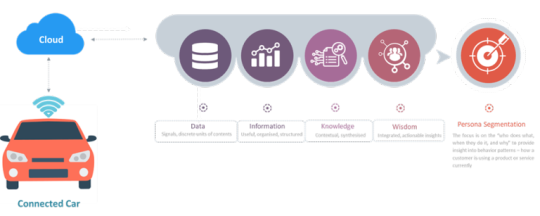
The monetization of Connected Car data requires a set of enablers in the ecosystem.
On-board the car: Internet connectivity, navigation system, HMI, high performance controller, sensors etc.
Infrastructure: 4G/5G Mobile towers, big-data analytics, artificial intelligence, cloud computing, smart road infrastructure, software platforms etc.
Potential Revenue Streams
1. Data Driven Recommendation for Tyre Change
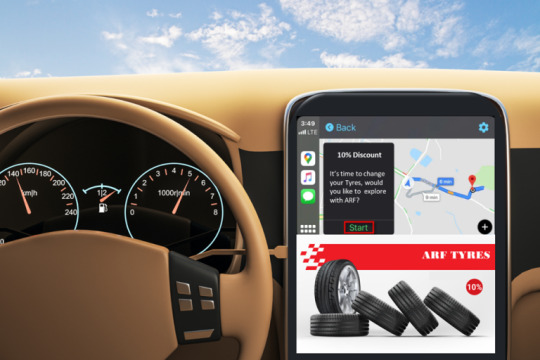
Since tyres are subjected to significantly harsh operating conditions, it is important to continuously assess and forecast their health. Multiple ML/AI algorithms utilize cloud-based data for continuous learning, which aids in anticipating tyre wear and/or failure and alerting end-users to make right decisions when they are needed. OEMs could potentially recommend the product at the greatest discount through their partnerships with tyre manufacturers. This will enable the buyer to purchase the item for a lower cost, and OEM will also benefit from such a business model.
2. Tailored Advertisement
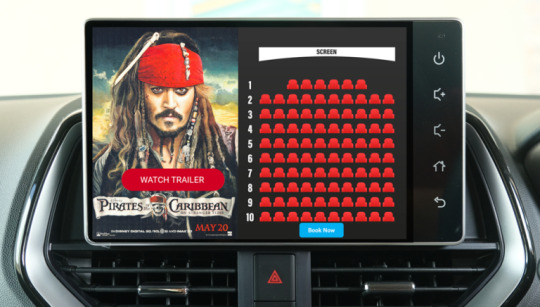
How can we take advantage of this opportunity using connected car features, where movie production firms are spending millions on marketing? Based on consumer preferences like fan-base and language, OEM can use the vehicle data to push movie trailers or any other promotional items to car infotainment systems.
3. Restaurant Suggestion Based on Customer Food Habits

4. Usage Based Insurance (UBI)

Monetization Model

The two main categories of revenue generation for OEM are subscription and third-party services. Customers have the option of choosing a premium account or a free account, subject to watching any advertisements the OEM may promote. Another approach allows customers to enrich OEM data models by contributing their personal information for a much lower premium fee, creating a win-win scenario for both parties.
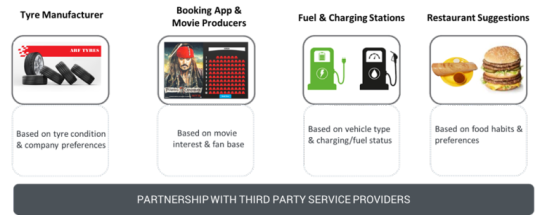
OEMs have a lot of work to do on increasing the amount of data generated that can be useful for monetization. There are several low-hanging fruits that OEM can monetize such as prognostics services, and security applications such as remote ignition disablement or slowdown for stolen vehicle protection and assistance. Also, exciting applications are possible in areas such as parking as a service, productivity enhancement services and integration into multimodal transport networks.
Conclusion
Data-driven services are developed to generate new value streams, which eventually result in new market configurations and the appearance of new business models. The data produced by operating automobiles opens the door for new categories of data-driven services in the automotive sector. Although still in its infancy, the monetization potential of automobile data is enormous. The business models that will support these use cases are already developing and car data-enabled business models have the potential to transform transportation into a service. A clear strategic shift towards developing digitalization as a core revenue stream is required. This would lead to the allocation of significant investments to enhance product development capabilities, by successful collaborations with key players in the digital ecosystem.
Original Source: https://www.tatatechnologies.com/media-center/connected-car-based-data-monetization-an-untapped-opportunity-for-oems/
Haseel Veluthethodi, FOTA — Senior Systems Engineer, Tata Technologies
0 notes
Text
Automotive Hypervisor Market Trends, Analysis & Forecast, 2032
As per a recent research report, Automotive Hypervisor Market to surpass USD 2 bn by 2032.
The rising demand for autonomous driving technologies and advanced driver assistance systems is one of the major factors driving market trends. The surge in the adoption of ADAS features, such as adaptive cruise control, lane departure warning, and collision avoidance systems, has fueled the demand for automotive hypervisors. Automotive hypervisors provide a virtualization platform that allows multiple operating systems and software applications to run concurrently on a single hardware platform. With massive investments by automakers and technology companies, along with the increasing focus on developing autonomous vehicles, the industry is set to witness steady growth.
Request for Sample Copy report @ https://www.gminsights.com/request-sample/detail/5866
The automotive hypervisor market size from the fully autonomous segment is estimated to exceed USD 700 million by 2032. Fully autonomous vehicles rely on a complex array of sensors, AI, and software systems to navigate and make decisions on the road. Automotive hypervisors play a crucial role in managing and coordinating the various software components and subsystems within these autonomous vehicles. As the demand for fully autonomous vehicles continues to rise, the need for robust and reliable automotive hypervisors will grow.
In terms of vehicle type, the automotive hypervisor market from the commercial vehicles segment is forecast to grow at over 32% CAGR from 2023 to 2032. Commercial vehicles, such as trucks, buses, and delivery vans, are undergoing a digital transformation with the integration of advanced technologies. Automotive hypervisors play a crucial role in these vehicles by enabling the consolidation of multiple functions and systems onto a single hardware platform. High demand for enhanced connectivity, efficient fleet administration, and driver assistance technologies in commercial vehicles has fueled the adoption of automotive hypervisors, thereby boosting segment growth.
Request for customization this report @ https://www.gminsights.com/roc/5866
Asia Pacific automotive hypervisor market size is poised to reach more than USD 600 million by the end of 2032. The region's rapidly growing automotive industry, coupled with the increasing demand for connected and autonomous vehicles, has created a favorable market environment for automotive hypervisors. Additionally, the presence of leading automotive manufacturers and technology hubs is driving innovation and adoption of advanced automotive technologies. Furthermore, governments in countries like China, Japan, and South Korea are actively promoting the development and deployment of intelligent transportation systems, which is foreseen to impel the regional revenue share.
Partial chapters of report table of contents (TOC):
Chapter 2 Executive Summary
2.1 Automotive hypervisor market 360º synopsis, 2018 - 2032
2.2 Business trends
2.3 Regional trends
2.4 Vehicle type trends
2.5 Hypervisor type trends
2.6 Level of autonomous trends
2.7 Sales channel trends
Chapter 3 Automotive Hypervisor Industry Insights
3.1 Impact on COVID-19
3.2 Russia- Ukraine war impact
3.3 Industry ecosystem analysis
3.4 Vendor matrix
3.5 Profit margin analysis
3.6 Technology & innovation landscape
3.7 Patent analysis
3.8 Key news and initiatives
3.9 Regulatory landscape
3.10 Impact forces
3.10.1 Growth drivers
3.10.1.1 Increasing Complexity of Automotive Systems
3.10.1.2 Growing Demand for Vehicle Connectivity and Electrification
3.10.1.3 Support for Over-the-Air (OTA) Updates
3.10.1.4 Increasing Demand for Autonomous and Advanced Driver Assistance Systems (ADAS)
3.10.1.5 Enhanced Safety and Security
3.10.2 Industry pitfalls & challenges
3.10.2.1 Integration Challenges
3.10.2.2 Compatibility and Standardization Issues
3.11 Growth potential analysis
3.12 Porter’s analysis
3.13 PESTEL analysis
About Global Market Insights:
Global Market Insights, Inc., headquartered in Delaware, U.S., is a global market research and consulting service provider; offering syndicated and custom research reports along with growth consulting services. Our business intelligence and industry research reports offer clients with penetrative insights and actionable market data specially designed and presented to aid strategic decision making. These exhaustive reports are designed via a proprietary research methodology and are available for key industries such as chemicals, advanced materials, technology, renewable energy and biotechnology.
Contact us:
Aashit Tiwari
Corporate Sales, USA
Global Market Insights Inc.
Toll Free: +1-888-689-0688
USA: +1-302-846-7766
Europe: +44-742-759-8484
APAC: +65-3129-7718
Email: [email protected]
0 notes
Text
Automotive Over-The-Air (OTA) Update Market to Observe Strong Growth to Generate Massive Revenue in Coming Years
Global Automotive Over-The-Air (OTA) Update Market Report from AMA Research highlights deep analysis on market characteristics, sizing, estimates and growth by segmentation, regional breakdowns & country along with competitive landscape, player’s market shares, and strategies that are key in the market. The exploration provides a 360° view and insights, highlighting major outcomes of the industry. These insights help the business decision-makers to formulate better business plans and make informed decisions to improved profitability. In addition, the study helps venture or private players in understanding the companies in more detail to make better informed decisions.
Major Players in This Report Include Continental AG (Germany),Delphi Automotive (United Kingdom),Robert Bosch GmbH (Germany),Denso Corporation (Japan),Airbiquity Inc. (United States),HERE Technologies (Netherlands),Harman International Industries, Inc. (United States),NXP Semiconductors N.V.(Netherlands),Verizon Communications, Inc.(United States),Tesla, Inc. (United States),Infineon Technologies AG (Germany),General Motor Company (United States)
Automotive Over-The-Air (OTA) Update enables automotive manufacturers to fix, maintain, and improve vehicles through remote software updates downloaded to the vehicle from a cloud-based server. Increasing automotive digitalization has inevitably meant that vehicles need regular firmware and software updates to keep pace with the latest advances in connectivity but also to update the automotive cybersecurity. Rather than repeatedly recalling the vehicle to a garage it is much more economical to perform these updates wirelessly over the air (OTA). By 2025, the automotive companies to be making over 100 million updates a year to customers’ vehicles using software-over-the-air (SOTA) technology. Those updates will span every aspect of the vehicle, from infotainment and telematics services to acceleration rates and parking controls.
Market Drivers Increasing Demand for ADAS and Connected Cars
Adoption of SOTA by Automotive
Market Trend Emergence of ‘Embedded Electronics’ and ‘IoT’ Technology
Opportunities Increasing Automotive OEMs Collaborations with OTA Solution Providers
Adoption of Telematics Control Units (TCUs) by Automotive Manufacturers
Challenges Ongoing COVID-19 Pandemic
The Automotive Over-The-Air (OTA) Update market study is being classified by Application (Telematics Control Unit (TCU), Electronic Control Unit (ECU), Infotainment, Safety & Security, Others), Automotive Type (Passenger Cars, Light Commercial Vehicles (LCVs), Heavy Commercial Vehicles (HCVs)), Technology (Firmware over-the-air (FOTA), Software over-the-air (SOTA)), Propulsion (Internal Combustion Engine, Electric Vehicle), Connectivity (Embedded 3G/4G Modem, Embedded Wi-Fi, Smartphone Bluetooth/ Tethering Hotspot)
Presented By
AMA Research & Media LLP
0 notes
Text
Top 7 Connected Car Software Development Companies
Connected car/ vehicle solutions are on the ascent. The car-sharing economy is probably going to become one of the significant components molding the metropolitan scene of tomorrow.
Connected vehicle services have previously turned into a fundamental piece of any OEM’s offering. Auto industry goliaths and new businesses are both searching for programming vendors that give first-class associated vehicle services. Programming for in-vehicles is turning into the primary differentiator in the vehicle market, making any business with significant involvement with V2X programming improvement exceptionally popular.
To stay up with the most recent trends in connected vehicle benefits, it’s worth following industry trailblazers intently. Here is a rundown of the top connected vehicle programming development organizations in 2023.
1. Airbiquity

Services
Service management: foundational service integration, deployment, and control
OTAmatic: orchestrated and automated OTA software updates and data management
Fleet management: commercial fleet operation and efficiency optimization
2. Bosch
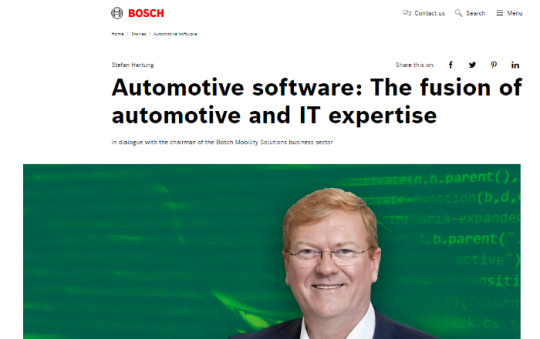
Services
Comprehensive safety-first fleet management solutions based on advanced car data analytics
V2X software development, including smart behavior tracking, mobile driver apps, and digital logbooks
Connectivity systems based on real-time journey analysis, vehicle fuel consumption tracking, and geo-fence generation
3. Cientra

Services
AutoSAR MCAL drivers
Telematics
Mobility & connectivity
ADAS
V2V/ V2X
AI/ IoT
4. Intellias

Services
Developing software that connects vehicles to all types of road and traffic objects
Developing remote vehicle control apps with the use of the CAN bus and other interfaces
Enabling content broadcasting via radio channels
Developing cloud-based apps to enable the exchange of location data via V2X connectivity
Synchronizing personal content based on user profiles
Supporting easy over-the-air updates for software and maps with connected car solutions
5. Connexion

Services
Complex CXZ Telematics-based products for owners of small fleets
Developing IoT-based apps reinforcing the driver’s ability to monitor vehicle performance in real-time
Designing advanced infotainment systems
6. KPIT
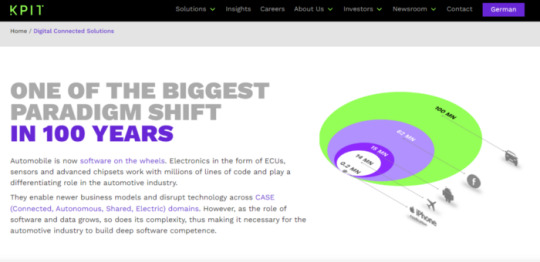
Services
Autonomous Driving & ADAS
Electric & Conventional Powertrain
Connected Vehicle
Vehicle Diagnostics
AUTOSAR
Vehicle Engineering and Design
Digital Connected Solutions
7. Harman

Services
Developing, managing, and operating in-vehicle applications and connected services via the HARMAN Ignite Platform
Providing a reliable, convenient, secure, and economical way to update vehicle software with the use of Remote Vehicle Updating Services (OTA)
Providing high-quality automotive engineering services to OEMs and suppliers
Developing a full range of aftermarket connected automotive products
Driverless vehicles, imaginative models of possession in view of vehicle sharing, and advances in human-machine interactions are completely founded on very good quality connected vehicle solutions. Great vehicle data analytics tools combined with impeccable IoT gadgets make V2X programming an indispensable component guaranteeing the manageability of automotive industry development.
The brand-new safety standards and economic benefits associated with the vehicle-sharing model exhibit the possibilities of V2X innovation. No big surprise the eventual fate of car monsters, OEMs, little merchants, and related new businesses relies straightforwardly upon the capacity of a business to cooperate with the most pertinent and creative software development company.
0 notes
Text
Over-The-Air (OTA) Update Market Analysis to 2028 Intensifying Globally with Top Companies:
The main aim of the Over-The-Air (OTA) Update report is to give the map of the growth for the Over-The-Air (OTA) Update market that will help in providing the clients with the required information for the formulation strategies to meet their respective business goals. The report also provides deep knowledge of the Over-The-Air (OTA) Update for the previous year as well as for the forecast years and what the CAGR level of the market is going to be. This report is a synopsis of what the market conditions are going to be while also giving information regarding the market’s definition, classifications, applications, and engagements are. This report also aims to analyze the Over-The-Air (OTA) Update market’s developments including the market improvement, market position, and others which are usually done by the prominent players and brands of the automotive industry. This report also consists of all the market drivers and restraints which are obtained through SWOT analysis. The report also has the CAGR values of the Over-The-Air (OTA) Update market for the base years 2021, the historic year 2020, and forecast years 2021-2028.
Get Sample Copy @ https://iconmarketresearch.com/inquiry/sample/IMR0545
The Over-The-Air (OTA) Update market report provides information and statistics on market shares, size, restraining factors, and driving factors for the forecast period 2021 to 2028. It also mentions the role of main market players in the automotive industry. The report on Over-The-Air (OTA) Update market evaluates the value of the market report, keeping in mind the application and regional segments, market share, and size while forecasting the market for each product type and application of the Over-The-Air (OTA) Update market in different segments of the report. The research report also mentions some sections of the Over-The-Air (OTA) Update market including opportunities, growth, trend, size, demand, and technology used by prominent players of the market. Then, it gives detailed profiles of the key players as a part of the competitive landscape of the Over-The-Air (OTA) Update market.
The study of the report divides it into several sub-segments and represents the whole automotive industry. An estimation of the revenue generated by the entire automotive industry and its sub-segments are also provided in the report. It decides the factors that affect the demand of the automotive industry rapidly, including methods of development, growth networks, and the product model. The report also points out the greatest prospects for the growth of the automotive market such as forecasting the growth of the market, the launch of new goods, and analysis of the product demand, purchase decisions, several economic factors that are important to determine the trend of Over-The-Air (OTA) Update market, and the attractiveness of the market. The report on the Over-The-Air (OTA) Update market will help in assisting the stakeholders in identifying high-potential customers, such as distributors and manufacturers.
0 notes
Text
The Connected Vehicles Market: Driving into the Future
The Connected Vehicles Market was valued at USD 59.8 billion in 2023-e and will surpass USD 182.8 billion by 2030; growing at a CAGR of 17.3% during 2024 - 2030. The report focuses on estimating the current market potential in terms of the total addressable market for all the segments, sub-segments, and regions.
In the process, all the high-growth and upcoming technologies were identified and analyzed to measure their impact on the current and future market. The report also identifies the key stakeholders, their business gaps, and their purchasing behavior. This information is essential for developing effective marketing strategies and creating products or services that meet the needs of the target market.
Get a Sample Report: https://intentmarketresearch.com/request-sample/connected-vehicles-market-3311.html
Understanding Connected Vehicles
Vehicle-to-Vehicle (V2V) Communication: Cars can share information about speed, position, and heading, which helps in preventing collisions and improving traffic flow.
Vehicle-to-Infrastructure (V2I) Communication: Vehicles interact with road infrastructure like traffic lights and road signs to enhance safety and efficiency.
Infotainment and Navigation: Drivers and passengers can enjoy real-time traffic updates, streaming services, and hands-free communication.
Remote Diagnostics and Over-the-Air (OTA) Updates: Vehicle health monitoring and software updates can be performed remotely, ensuring optimal performance and security.
Market Dynamics
The global connected vehicles market is witnessing robust growth, driven by several key factors:
Safety and Regulatory Mandates: Governments worldwide are implementing stringent safety regulations that necessitate the adoption of advanced driver assistance systems (ADAS) and connectivity solutions.
Consumer Demand for Convenience and Efficiency: Modern consumers expect seamless connectivity in all aspects of their lives, including their vehicles. This demand drives automakers to integrate advanced infotainment and navigation systems.
Technological Advancements: The rapid development of 5G technology and the Internet of Things (IoT) is enhancing vehicle connectivity, making it faster and more reliable.
Emergence of Autonomous Vehicles: The push towards autonomous driving relies heavily on vehicle connectivity to ensure safe and efficient operation.
Key Players and Innovations
Several automotive giants and tech companies are leading the charge in the connected vehicles market. Companies like Tesla, General Motors, Ford, and BMW are at the forefront, continuously innovating and integrating new technologies. Key innovations driving the market include:
5G Connectivity: The rollout of 5G networks is a game-changer, offering high-speed, low-latency communication essential for real-time data exchange between vehicles and infrastructure.
Edge Computing: By processing data closer to the source, edge computing reduces latency and enhances the performance of connected vehicle systems.
Artificial Intelligence (AI): AI is critical for developing advanced driver assistance systems, predictive maintenance, and personalized in-car experiences.
Blockchain Technology: Ensuring data security and privacy, blockchain can play a pivotal role in safeguarding the vast amounts of data generated by connected vehicles.
Get an insights of Customization: https://intentmarketresearch.com/ask-for-customization/connected-vehicles-market-3311.html
Challenges and Opportunities
While the connected vehicles market is poised for significant growth, it faces several challenges:
Cybersecurity Threats: As vehicles become more connected, they also become more vulnerable to cyber-attacks. Ensuring robust cybersecurity measures is paramount.
Infrastructure Development: The full potential of connected vehicles can only be realized with the development of smart infrastructure, which requires substantial investment.
Data Privacy Concerns: With vast amounts of data being collected, issues around data privacy and ownership need to be addressed.
Despite these challenges, the opportunities are immense. The connected vehicles market holds the promise of:
Enhanced Road Safety: Reduced accidents and improved emergency response through real-time data sharing.
Improved Traffic Management: Alleviating congestion and optimizing traffic flow with intelligent transportation systems.
Environmental Benefits: Reducing emissions through efficient route planning and vehicle-to-infrastructure communication.
The Road Ahead
The future of the connected vehicles market is bright, with continued advancements in technology set to unlock new possibilities. The integration of connectivity in vehicles is not just enhancing the driving experience but is also paving the way for a future where autonomous driving is a reality. As we drive into this future, the collaboration between automakers, tech companies, and governments will be crucial in addressing challenges and maximizing the potential of connected vehicles.
In conclusion:
The connected vehicles market is on a transformative journey, reshaping the automotive landscape. With safety, convenience, and efficiency at its core, it promises to drive us into a smarter, more connected future.
0 notes
Text
Rise of Tesla

Rogers' five factors reminded me of Tesla's rise to the top with their electric vehicles (EVs). EVs are powered by electricity and are classified into two types: hybrid and plug-in/battery (PEVs or BEVs). Based on a case study "The race to win the electric vehicle market", EVs gained popularity in the early 1900s due to low noise levels. But with gas powered vehicles like the Ford Model T and low gas prices, US consumers shifted towards gas. Decades later, PEVs had significant improvements and started to gain popularity again. Nissan was one of the very first automotive companies that launched a commercial PEV, the Leaf, in 2010:

However, Nissan branded the Leaf as a secondary local transportation car and lacked a clear long-term vision in the EV space. Thus, they failed to maintain their position in the market.
Meanwhile, Tesla started as an electric racing car company in 2003. They branded themselves as a technology company rather than an automobile company. The Model 3 came out in 2017 and till date, it became the most sold PEV in the US. How were they able to gain a majority of the US EV market share in such a short time period?
Let's use Rogers' five factors to find out!
1) Relative Advantage: Compared to the Nisan Leaf's range of 73 miles, Tesla's Model S has a range of 208 miles. This proves that PEVs are not constrained by range. The Model S also feels like a race car, accelerating from 0 to 60 mph in less than 5.5 seconds.
2) Compatibility: EVs were already in the market before Tesla rose, so people were familiar with charging stations. The government was also providing incentives towards buying eco-friendly vehicles to slowly phase out gas powered vehicles.
3) Complexity: It is extremely quick and seamless to buy a Tesla car. They use an online platform for customers to purchase vehicles - it's like buying a product on Amazon. Tesla also targets a premium customer segment and thus, their vehicles have a slick interior/exterior design. However, their interface is nothing like anybody has seen before - there are no buttons or dials! It's simply a screen and you have to figure out the proper configuration on a trip:

4) Trialability: Tesla excels in this area because of their over-the-air (OTA) updates, similar to software updates on your laptop. They rely heavily on agile product development, rapidly taking customer feedback on social media and other platforms to iteratively develop their vehicles. In comparison, traditional automotive companies perform all R&D before the product launch.
5) Observability: As of 2019, Tesla had over 730 supercharging stations and are growing rapidly. They also heavily rely on word of mouth to reduce advertising cost, so customers rely on trusted individuals within their immediate network.
These factors explain the rapid adoption of Tesla EVs and their rise to the top! 🚗
1 note
·
View note
Text
Future Trends In Vcus: Paving The Way For Smart Mobility
July 31, 2023
bydorleco
withno comment
emmobility CONTROLS
Edit
Introduction
The automotive sector has undergone an incredible transition in recent years because of technological breakthroughs. The creation of Vehicle Control Units (VCUs) is an essential component of this shift. These highly developed electronic control units are essential for handling many systems in contemporary cars, from entertainment and safety features to engine management. VCUs are expected to experience substantial breakthroughs as we progress toward a future characterized by autonomous driving, electric vehicles, and linked mobility.
The global vehicle control unit (VCU) market research report provides an in-depth analysis, including critical factors such as the overall size of the global market, in both regional and country-level terms, as well as market share, market growth, an analysis of recent developments, partnerships and opportunities, sales and competitive landscape analysis, expected product launches, technological innovations (both developed and in-progress), and market share values.
This blog examines the emerging VCU trends that will transform how we operate and interact with vehicles:
1. Increased Integration of Artificial Intelligence (AI)

2. Edge Computing for Real-Time Processing
Vehicles are producing a ton of data from various sensors and communication systems as they grow increasingly connected. For responsive and intelligent vehicle control to be possible, real-time processing of this data is essential. Edge computing will be used by future VCUs to process data closer to its source, lowering latency and assuring quicker reaction times. This will be especially important for autonomous cars because they need to be able to make quick decisions in order to handle challenging environments.
3. Over-the-Air (OTA) Updates and Cyber security
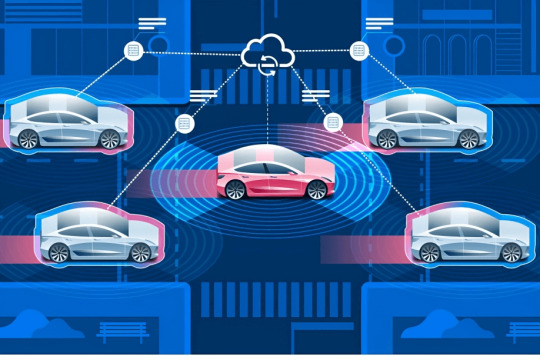
4. V2X Communication for Safer Roads
V2X communication will be essential to the development of mobility in the future. VCUs can improve situational awareness and proactively prevent accidents by enabling vehicles to interact with one another, the environment, and people. Our roads will become safer and more effective thanks to features like Intersection Collision Warnings, Emergency Vehicle Signal Priority, and Pedestrian Detection made possible by V2X communication.
5. Electrification and Energy Efficiency

6. Personalization and User Experience
User experience and customization will be given top priority in future VCUs, allowing the driving environment to be tailored to individual preferences. Each passenger will have a distinctive and comfortable driving experience thanks to VCUs, which will offer individualized infotainment settings, climate control, and adaptive driving modes. Passengers will be able to select from a variety of autonomous driving modes based on their preferences and amount of technology confidence as part of this greater customization in autonomous driving.
7. Augmented Reality (AR) and Heads-Up Displays (HUDs)
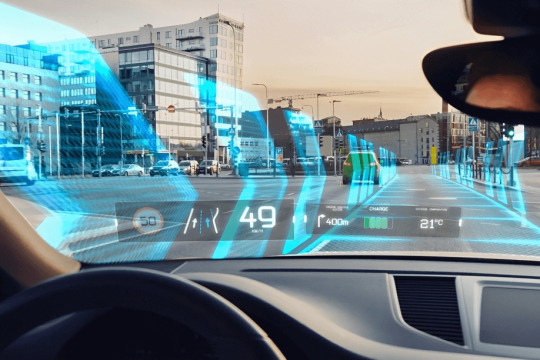
Conclusion
With advancements in artificial intelligence, connectivity, energy economy, and user experience poised to completely transform the automobile industry, the future of vehicle control units is tremendously bright. VCUs will open the door to a new era of smart mobility as they develop into smarter, more networked, and secure systems.
The incorporation of cutting-edge technologies in VCUs will get us one step closer to realizing the dream of completely autonomous, electric, and connected vehicles, which will make everyone’s experience on the road safer, greener, and more enjoyable.
#vcu#ecu#automobile#automotive#electrical#electronics#electriccar#ev#bike#bms#batterymanagementsystem#tesla#vehiclecontrolunit
0 notes
Text
Automotive Cloud-based Solution Market 2022-2028 Size, Share, Trend, Key Palyers with Products
Automotive Cloud-based Solution Market 2022-2028
A New Market Study, Titled “Automotive Cloud-based Solution Market Upcoming Trends, Growth Drivers and Challenges” has been featured on fusionmarketresearch.
Description
This global study of the Automotive Cloud-based Solution market offers an overview of the existing market trends, drivers, restrictions, and metrics and also offers a viewpoint for important segments. The report also tracks product and services demand growth forecasts for the market. There is also to the study approach a detailed segmental review. A regional study of the global Automotive Cloud-based Solution industry is also carried out in North America, Latin America, Asia-Pacific, Europe, and the Near East & Africa. The report mentions growth parameters in the regional markets along with major players dominating the regional growth.
Request Free Sample Report @ https://www.fusionmarketresearch.com/sample_request/2021-2030-Report-on-Global-Automotive-Cloud-based-Solution-Market/68954
This research covers COVID-19 impacts on the upstream, midstream and downstream industries. Moreover, this research provides an in-depth market evaluation by highlighting information on various aspects covering market dynamics like drivers, barriers, opportunities, threats, and industry news & trends. In the end, this report also provides in-depth analysis and professional advices on how to face the post COIVD-19 period.
The research methodology used to estimate and forecast this market begins by capturing the revenues of the key players and their shares in the market. Various secondary sources such as press releases, annual reports, non-profit organizations, industry associations, governmental agencies and customs data, have been used to identify and collect information useful for this extensive commercial study of the market. Calculations based on this led to the overall market size. After arriving at the overall market size, the total market has been split into several segments and subsegments, which have then been verified through primary research by conducting extensive interviews with industry experts such as CEOs, VPs, directors, and executives. The data triangulation and market breakdown procedures have been employed to complete the overall market engineering process and arrive at the exact statistics for all segments and subsegments.
Leading players of Automotive Cloud-based Solution including:
Accenture
Aliyun.com
Amazon
Baidu Cloud
FIT2CLOUD
FutureMove Automotive
HUAWEI CLOUD
icsoc
JD Cloud & AI
Kingsoft Cloud
MAPGOO
Microsoft
Neusoft
Tencent Cloud
Ucloud
yonyou auto
Market split by Type, can be divided into:
Fleet Management
Infotainment
OTA Updates
Telematics
ADAS
Market split by Application, can be divided into:
IC Engine Vehicles
New Energy Vehicles
Market split by Sales Channel, can be divided into:
Direct Channel
Distribution Channel
Market segment by Region/Country including:
North America (United States, Canada and Mexico)
Europe (Germany, UK, France, Italy, Russia and Spain etc.)
Asia-Pacific (China, Japan, Korea, India, Australia and Southeast Asia etc.)
South America (Brazil, Argentina and Colombia etc.)
Middle East & Africa (South Africa, UAE and Saudi Arabia etc.)
Ask Queries @ https://www.fusionmarketresearch.com/enquiry.php/2021-2030-Report-on-Global-Automotive-Cloud-based-Solution-Market/68954
Table of Contents
Chapter 1 Automotive Cloud-based Solution Market Overview
1.1 Automotive Cloud-based Solution Definition
1.2 Global Automotive Cloud-based Solution Market Size Status and Outlook (2015-2030)
1.3 Global Automotive Cloud-based Solution Market Size Comparison by Region (2015-2030)
1.4 Global Automotive Cloud-based Solution Market Size Comparison by Type (2015-2030)
1.5 Global Automotive Cloud-based Solution Market Size Comparison by Application (2015-2030)
1.6 Global Automotive Cloud-based Solution Market Size Comparison by Sales Channel (2015-2030)
1.7 Automotive Cloud-based Solution Market Dynamics (COVID-19 Impacts)
1.7.1 Market Drivers/Opportunities
1.7.2 Market Challenges/Risks
1.7.3 Market News (Mergers/Acquisitions/Expansion)
1.7.4 COVID-19 Impacts on Current Market
1.7.5 Post-Strategies of COVID-19 Outbreak
Chapter 2 Automotive Cloud-based Solution Market Segment Analysis by Player
2.1 Global Automotive Cloud-based Solution Sales and Market Share by Player (2018-2020)
2.2 Global Automotive Cloud-based Solution Revenue and Market Share by Player (2018-2020)
2.3 Global Automotive Cloud-based Solution Average Price by Player (2018-2020)
2.4 Players Competition Situation & Trends
2.5 Conclusion of Segment by Player
Chapter 3 Automotive Cloud-based Solution Market Segment Analysis by Type
3.1 Global Automotive Cloud-based Solution Market by Type
3.1.1 Fleet Management
3.1.2 Infotainment
3.1.3 OTA Updates
3.1.4 Telematics
3.1.5 ADAS
3.2 Global Automotive Cloud-based Solution Sales and Market Share by Type (2015-2020)
3.3 Global Automotive Cloud-based Solution Revenue and Market Share by Type (2015-2020)
3.4 Global Automotive Cloud-based Solution Average Price by Type (2015-2020)
3.5 Leading Players of Automotive Cloud-based Solution by Type in 2020
3.6 Conclusion of Segment by Type
Chapter 4 Automotive Cloud-based Solution Market Segment Analysis by Application
4.1 Global Automotive Cloud-based Solution Market by Application
4.1.1 IC Engine Vehicles
4.1.2 New Energy Vehicles
4.2 Global Automotive Cloud-based Solution Revenue and Market Share by Application (2015-2020)
4.3 Leading Consumers of Automotive Cloud-based Solution by Application in 2020
4.4 Conclusion of Segment by Application
Chapter 5 Automotive Cloud-based Solution Market Segment Analysis by Sales Channel
5.1 Global Automotive Cloud-based Solution Market by Sales Channel
5.1.1 Direct Channel
5.1.2 Distribution Channel
5.2 Global Automotive Cloud-based Solution Revenue and Market Share by Sales Channel (2015-2020)
5.3 Leading Distributors/Dealers of Automotive Cloud-based Solution by Sales Channel in 2020
5.4 Conclusion of Segment by Sales Channel
Continue…
ABOUT US:
Fusion Market Research is one of the largest collections of market research reports from numerous publishers. We have a team of industry specialists providing unbiased insights on reports to best meet the requirements of our clients. We offer a comprehensive collection of competitive market research reports from a number of global leaders across industry segments.
CONTACT US
Phone:
+ (210) 775-2636 (USA)
+ (91) 853 060 7487
0 notes
Text
Automotive Data Cloud Technology Market Future Developments, Upcoming Trends, and Opportunity Outlook 2029

Research Nester released a report titled “Automotive Data Cloud Technology Market: Global Demand Analysis & Opportunity Outlook 2029” which delivers detailed overview of the global automotive data cloud technology market in terms of market segmentation by application, electric vehicle type, vehicle type, service model, deployment and region.
Further, for the in-depth analysis, the report encompasses the industry growth indicators, restraints, supply and demand risk, along with detailed discussion on current and future market trends that are associated with the growth of the market.
The automotive data cloud technology market is projected to grow with a moderate CAGR during the forecast period, i.e., 2021-2029 on account of the rising demand for advanced infotainment systems and need for the advanced driver assistance systems in car networking.
The market is segmented by application into fleet management, infotainment systems, telematics, over the air (OTA) updates, ADAS, and others. Among these segments, the fleet management segment is anticipated to hold the largest share by the end of 2021 in the automotive data cloud technology market due to the modernization of the fleet business and an increase in industries like car-rental services.
On the basis of region, the market is segmented into North America, Europe, Asia Pacific, Latin America, and the Middle East & Africa, out of which, the automotive data cloud technology market in the Asia Pacific is projected to grow at the highest CAGR throughout the forecast period. This can be attributed because the government has mandated to have telematics systems and pre-installed satellite positioning for fleet vehicles to enhance fuel economy and vehicle wear.
Rising Demand for Advanced Infotainment Systems to Drive Market Growth
Adopting data cloud technology in the automotive market is higher as it enables better vehicle engineering by acknowledging customer’s demands with advanced analytic capabilities. It results in lower costs in inventory planning, replenishment, forecasting, and transport scheduling and optimization. It also leads to scalability and permits the supply chain to adjust to unexpected growth.
Request Sample For More Information@ https://www.researchnester.com/sample-request-2963
This report also provides the existing competitive scenario of some of the key players of the global automotive data cloud technology market which includes company profiling of Apple Inc. (NASDAQ: AAPL), BlackBerry Limited (ETR: RI1), Verizon Wireless, Continental AG (ETR: CON), Ericsson AB (STO: ERIC-B), Robert Bosch GmbH, Airbiquity Inc., DENSO Corporation (TYO: 6902), and Trimble Inc. (NASDAQ: TRMB). The profiling enfolds key information of the companies which encompasses business overview, products and services, key financials and recent news and developments. On the whole, the report depicts detailed overview of the global automotive data cloud technology market that will help industry consultants, equipment manufacturers, existing players searching for expansion opportunities, new players searching possibilities and other stakeholders to align their market centric strategies according to the ongoing and expected trends in the future.
About Research Nester
Research Nester is a leading service provider for strategic market research and consulting. We aim to provide unbiased, unparalleled market insights and industry analysis to help industries, conglomerates and executives to take wise decisions for their future marketing strategy, expansion and investment etc. We believe every business can expand to its new horizon, provided a right guidance at a right time is available through strategic minds. Our out of box thinking helps our clients to take wise decision so as to avoid future uncertainties.
Contact for more Info:
AJ Daniel
Email: [email protected]
U.S. +1 646 586 9123
U.K. +44 203 608 5919
0 notes